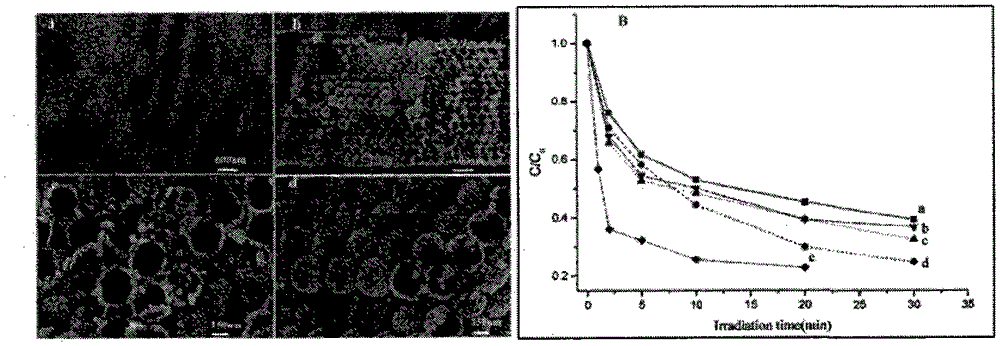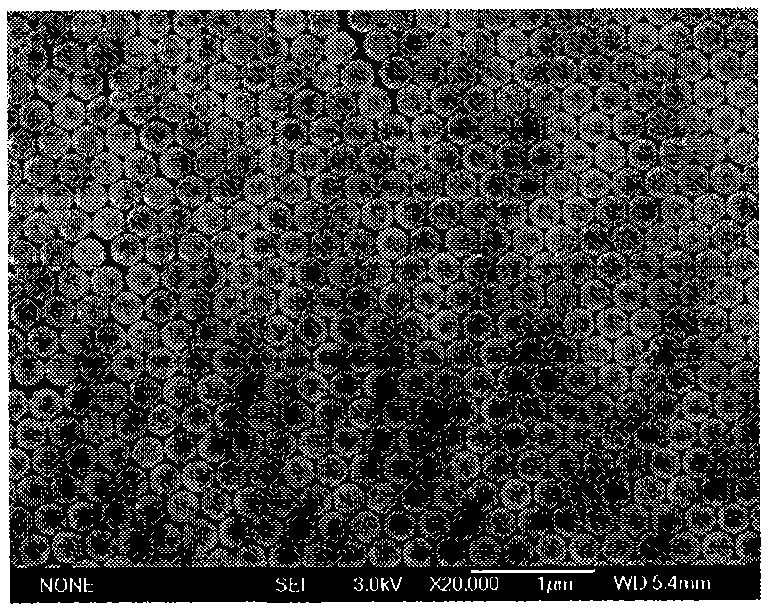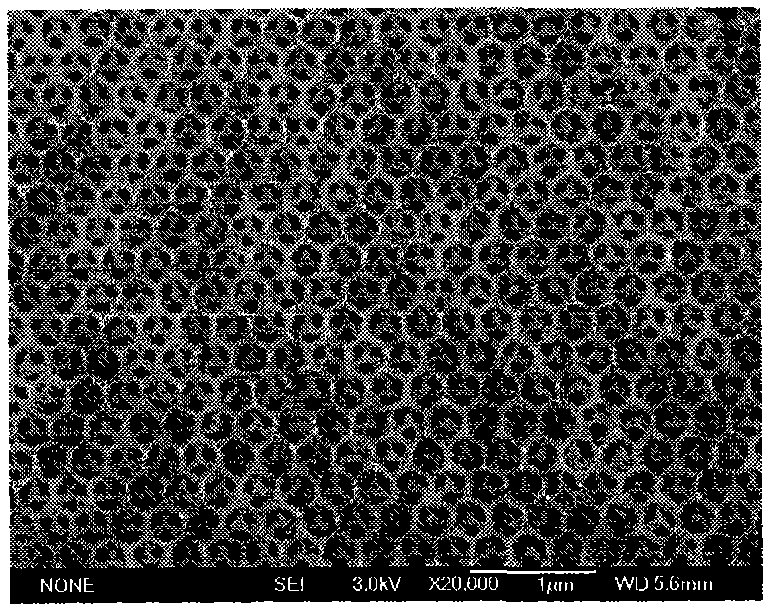Preparation of Ag loaded TiO2-ZnO inverse opal photonic crystal photocatalytic material
A technology of photocatalytic materials and photonic crystals, applied in the field of photocatalysis, can solve the problems of inconvenient use, complicated post-processing, difficult recycling, etc., achieve effective degradation and improve photocatalytic efficiency
- Summary
- Abstract
- Description
- Claims
- Application Information
AI Technical Summary
Problems solved by technology
Method used
Image
Examples
Embodiment 1
[0031] 1. Preparation of opal-type polymer photonic crystal template
[0032] The core-shell polymer poly(styrene-acrylamide) latex microspheres with a particle size of 255 nm self-assembled on a glass substrate to form a film by vertical deposition method under constant temperature conditions. Glass substrate (1cm×3cm) in hydrogen peroxide (H 2 o 2 ) and concentrated sulfuric acid (H 2 SO 4 ) soaked in the washing solution prepared at a volume ratio of 3:7 for 2h, rinsed with a large amount of water, rinsed with distilled water, and then vertically placed in a monodisperse poly(styrene-acrylamide) water with a concentration of 0.2wt%. In a small beaker of the emulsion, the self-assembled film was formed at a constant temperature of 60°C for about 48 hours, and a red opal-type polymer photonic crystal film was obtained. The surface morphology was characterized by scanning electron microscopy, and the photonic band gap was characterized by ultraviolet-visible reflectance sp...
Embodiment 2
[0049] 1. Preparation of opal-type polymer photonic crystal template
[0050] Similarly, core-shell polymer poly(styrene-acrylamide) latex microspheres with a particle size of 255 nm self-assembled on a glass substrate to form a film by vertical deposition method under constant temperature conditions. Glass substrate (1cm×3cm) in hydrogen peroxide (H 2 o 2 ) and concentrated sulfuric acid (H 2 SO 4 ) soaked in the washing solution prepared at a volume ratio of 3:7 for 1.5h, rinsed with a large amount of water, rinsed with distilled water, and then placed vertically in a monodisperse poly(styrene-acrylamide) with a concentration of 0.4wt%. In a small beaker of the water emulsion, self-assemble into a film at a constant temperature of 65° C. for about 36 hours, and a red opal-type polymer photonic crystal film is obtained. The surface morphology was characterized by scanning electron microscopy, and the photonic band gap was characterized by ultraviolet-visible reflectance s...
PUM
 Login to View More
Login to View More Abstract
Description
Claims
Application Information
 Login to View More
Login to View More - R&D
- Intellectual Property
- Life Sciences
- Materials
- Tech Scout
- Unparalleled Data Quality
- Higher Quality Content
- 60% Fewer Hallucinations
Browse by: Latest US Patents, China's latest patents, Technical Efficacy Thesaurus, Application Domain, Technology Topic, Popular Technical Reports.
© 2025 PatSnap. All rights reserved.Legal|Privacy policy|Modern Slavery Act Transparency Statement|Sitemap|About US| Contact US: help@patsnap.com



